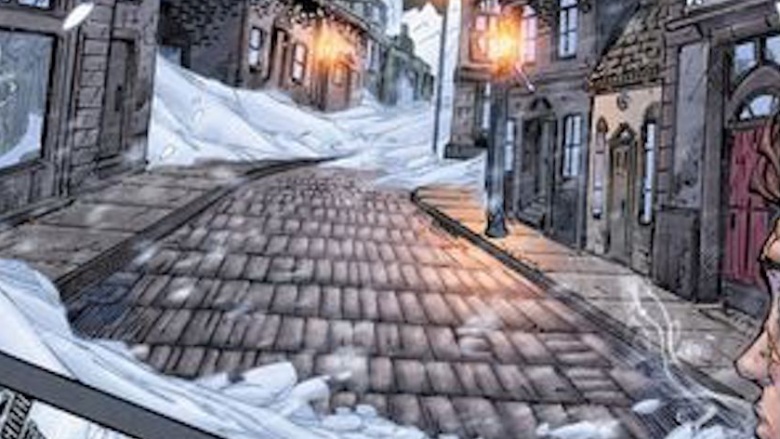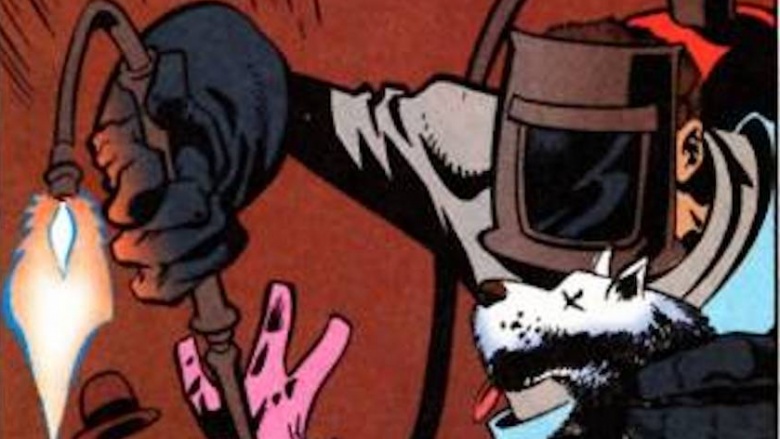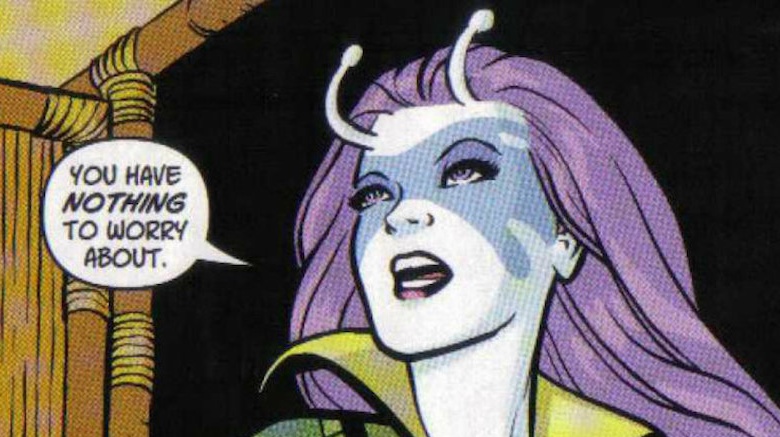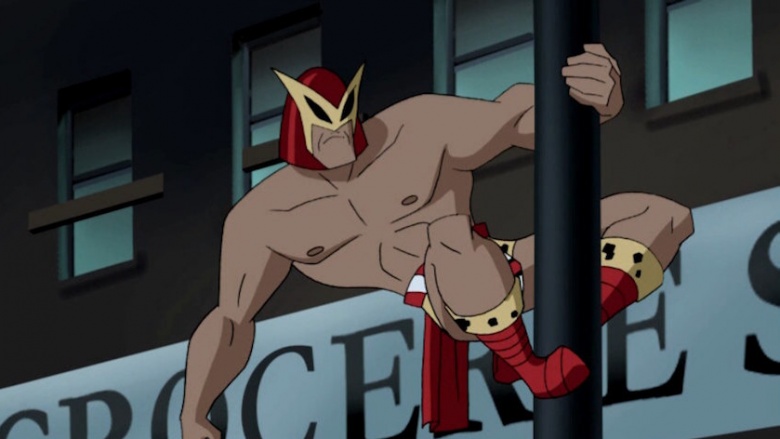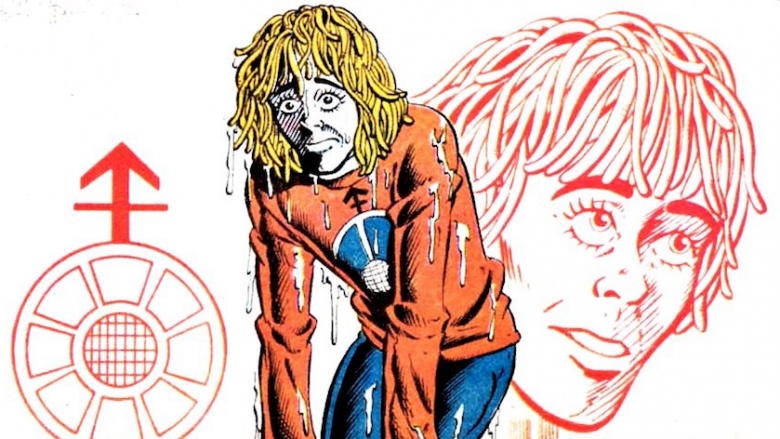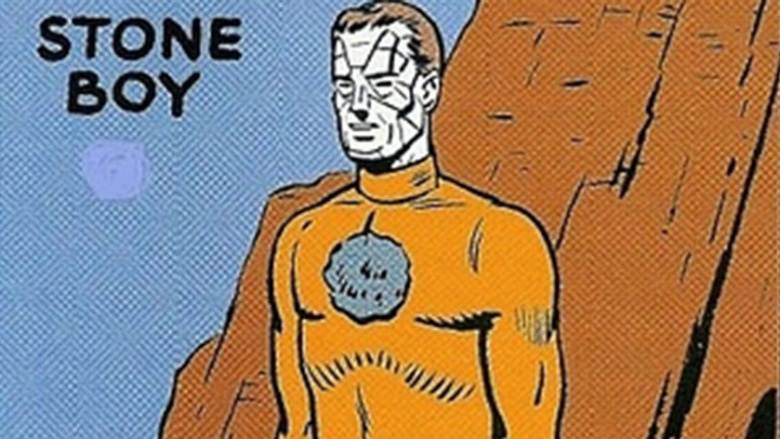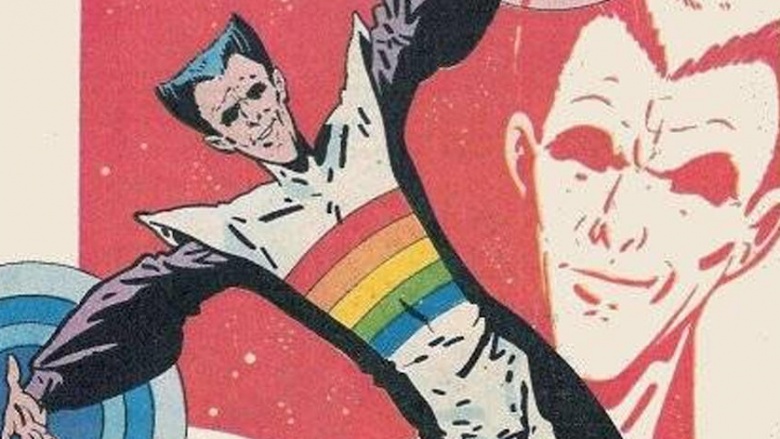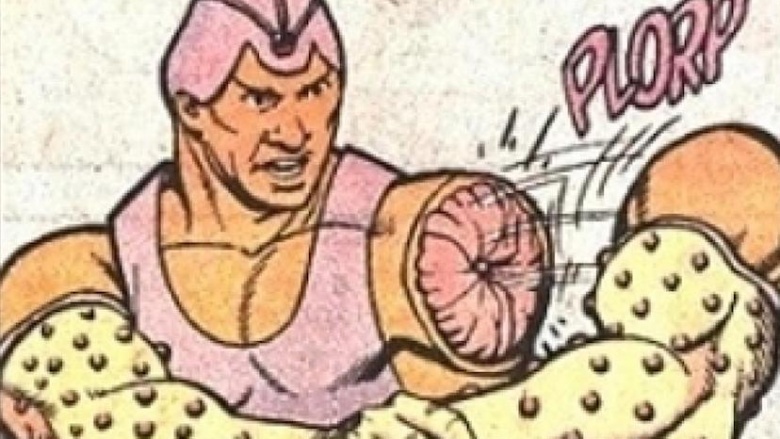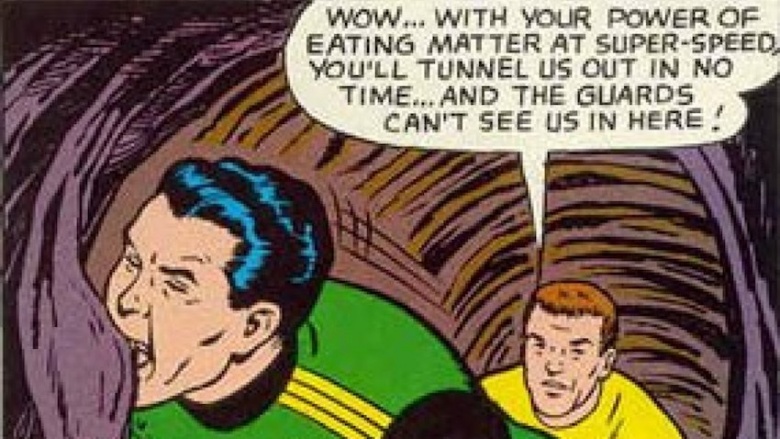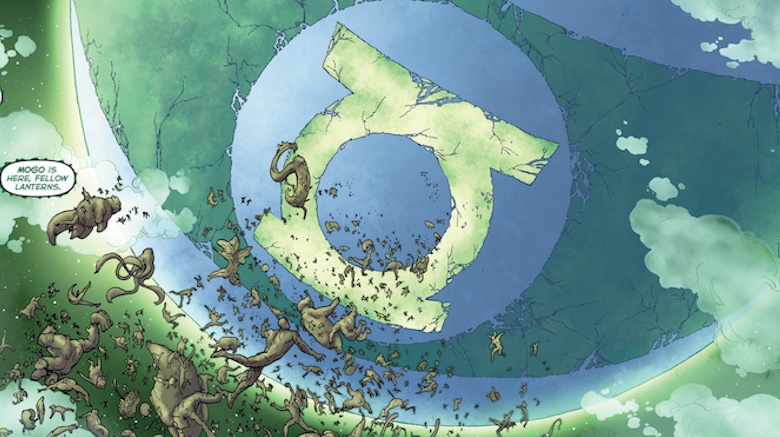Strange DC Superheroes You May Not Know Exist
Beaten to the movie theaters by the Marvel Cinematic Universe, D.C. Comics is now aggressively raiding its vaults for characters that it, too, can put in front of fresh eyeballs. Some of the future possibilities in the D.C. Extended Universe look very compelling, particular the revivals of once-popular characters like The Flash, Aquaman, Shazam, and Wonder Woman. You can be sure that the following weird and obscure D.C. characters will probably not be heading to the multiplex anytime soon. If ever.
Danny the Street
Appearing in a few dozen Doom Patrol comics, Danny the Street is exactly that: a sentient piece of pavement. Like an Incredible Hulk but made of asphalt, Danny can travel from town to town, wherever he's needed — offering himself (or itself; Danny doesn't claim one gender over another) as a place where society's rejects may find rest and entertainment. At one point, Danny grew and grew and became Danny the World.
Dogwelder
Somehow, this guy from the Hitman series is a hero even though his defining characteristic is villainous and bordering on the psychopathic at best. Dogwelder traps poor stray dogs off the street (like, kills them with a bear trap) and keeps hold of their carcasses until he needs to punish a criminal. At that point, he physically welds the dog to the bad guy's face while wearing a welder's mask.
Infectious Lass
First appearing in a 1974 issue of Superboy, this member of the Legion of Substitute Heroes is probably never going to make the A-squad due to the alarming, somewhat gross, double-edged sword nature of her main ability. See, Infectious Lass, AKA Drura Sehpt is from the planet Somahtur, a place where all the humanoids serve host to thousands of different kinds of disease-causing microbes. They infect others without affecting the host at all. Her ability can and has been weaponized, but she's also frequently infected those she's supposed to be fighting alongside.
B'wana Beast
A game warden named Mike Maxwell gets trapped in a cave on Mount Kilimanjaro drinks a magical serum that makes him strong and muscular. Then his trusty gorilla friend Djuba gives him a helmet that allows him to have full mental and physical command over the many beasts of the surrounding jungle. B'wana (which is Swahili for "guardian") was quickly forgotten after his 1967 debut, but this weird Tarzan/The Phantom hybrid did show up in a few episodes of Justice League and Batman: The Brave and the Bold.
Brother Power the Geek
Hippie culture permeated almost all American culture in the late 1960s, even comics. In 1968, D.C. tried to cater to the elusive countercultural element with Brother Power the Geek. Its title character was created when a bunch of hippies come across an abandoned mannequin, dress it in some old clothes, and then leave it be. Afterward, dust, rain, radiator heat, and a lightning strike combine in just such a way to bring Brother Power to life, man. The goofy, comical Brother Power starred in just two issues under his own name, but found the time to run for Congress, work as a circus freak, and get launched into orbit on an experimental missile.
Stone Boy
There are certain pros and cons to being able to turn oneself into stone whenever they want. Pro: things made of stone are impervious to anything that could kill living things. They're basically indestructible. Con: things that are made of stone are not living things, and thus are almost always completely immobile. This was a common story arc for Stone Boy. (The people from his home planet of Zwen could do this as a form of hibernation.)
Color Kid
Imagine the Green Lantern, with his dominion over anything green. Now, imagine Color Kid. He doesn't have power over anything of any color, except that he can change the color of anything. (He got this strange gift when he was doing a science experiment and was struck by a beam of light from another dimension.) The authoritative Legion of Super-Heroes declared his ability to be useless, so he wound up in the Legion of Substitute Heroes.
Arm-Fall-Off Boy
No, Arm-Fall-Off Boy's arms just don't fall off. Actually, he can detach them at will, and he does so with a "plorp" sound. Why would anybody ever want to detach their arms from their body? Well, in case you need to fit in a tight spot, or if the arm got stuck in something, for example. Mostly, though in his handful of comic appearances, Arm-Fall-Off Boy mostly just used the arm to bludgeon bad guys.
Matter-Eater Lad
He's from the planet Bismoll (like Pepto-Bismol), where, after the usual food sources became poisoned, the people survived and evolved by learning to accept absolutely anything as food. That means Matter-Eater Lad (or MEL) can use his ability to eat any sort of threatening device or eat his way out of a jam. He made his first appearance in a 1962 issue of Action Comics, in which he tries to eat a ray-gun. Obscure and goofy, sure. But no other superhero had indie rock legends Guided by Voices write a song about him.
Mogo
It takes all kinds on the Green Lantern Corps. The intergalactic military space police has had a number of different superpowered and mystical members from all over the universe in its ranks over decades of comics appearances. Almost all have been humanoid. Mogo (introduced in 1985) is not a thing with two legs, two arms, and a head, but it is a living thing. Mogo is a sentient planet. That means it can talk and do stuff in the name of justice, such as migrating a whole bunch of foliage to its equator to form a Green Lantern belt and symbol.

